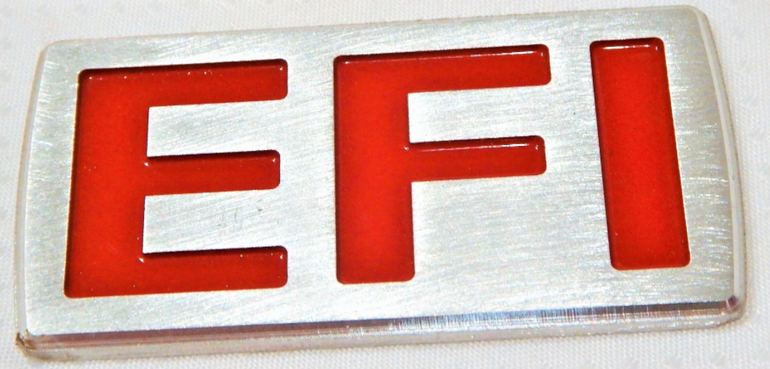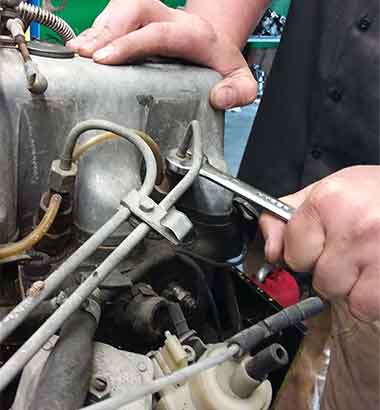Electronic Fuel Injection: How Far We've Come
Posted by Cassy Leone on Apr 8th 2022
Electronic Fuel Injection: How Far We've Come
This is the story of electronic fuel injection, and how it grew to touch every single automaker since its inception. This is more than the story of any one automaker. It is a study of failure, triumph, and innovation in an effort to move automotive technology forward.
To begin, let’s talk about something other than Mercedes, because unlike mechanical fuel injection, Mercedes-Benz had nothing to do with the invention of what would become EFI, at first. This is where the Bendix Corporation and the American Motors Corporation come into the picture.
Born in The USA
In 1954, the Nash-Kelvinator and Hudson car brands would merge and give rise to a company and a brand worth more than the words I can spare for them here. AMC was the fourth American car company trailing behind the Big Three, and they needed something, anything, to help give them the edge over those larger and wealthier companies. They needed something that Chevrolet, Ford, and Chrysler had yet to offer. They wanted to put fuel injection into the hands of your average American car buyer and that required something totally new. There was no way that AMC, a car company known mostly for the thrifty Rambler, could offer mechanical fuel injection on their cars. While reliable, the system developed by Bosch and employed by Mercedes was very expensive, the cost of an entire AMC vehicle all on it’s own! The system that was developed to combat this would be the forerunner to the modern electronic fuel injection systems used in all modern cars today.
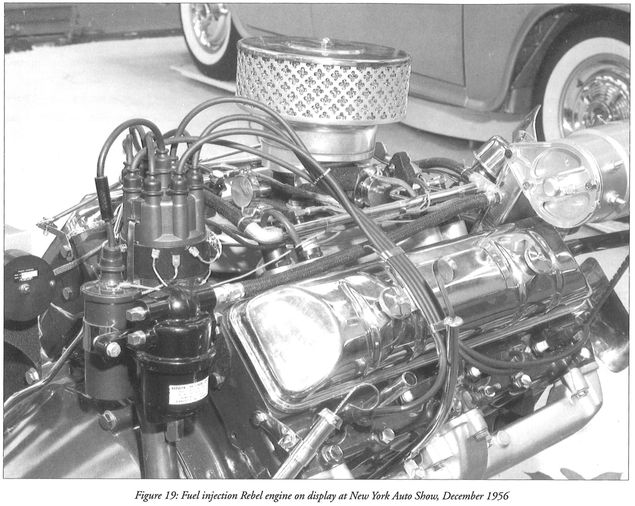
The Electrojector, as it would come to be known, used many parts of the conventional fueling system found on a carbureted vehicle. It would use an electric pump to push fuel to each injector valve mounted above each cylinder. On the way, it would be drawn through a fuel filter of the same type as one might find on a carbureted car, as opposed to the more expensive and heavier duty unit needed on cars equipped with mechanical fuel injection. The injectors would be aimed at the head of the intake valve and the system featured a return line for any unused fuel to prevent vapor lock. Sensors would monitor engine conditions and adjust the fuel to air ratio to maintain maximum performance.
While seemingly straightforward and very simple compared to the complex nature of mechanical fuel injection, the idea failed to light a spark in the American consumer car market. Bendix allowed Chrysler in 1958 the use of this system and only 35 units across all their different lines were ever sold with it. Americans saw electronic fuel injection as much too complex and expensive to be worth the money and the units that were installed with the Electrojector system were converted over to four barrel carburetors by their owners. Especially with the primitive electronics of the day, while brillant, it was clear that the Bendix EFI system would need an overhaul to find mass market appeal. If you’d like to see the original Electrojector system working in as close to stock form as technology will allow, there is a video on Youtube about an employee of Jay Leno who owns a Chrysler 300D that has had it’s factory fuel injection system returned to the car and restored.
Germany To The Rescue!
Bendix licensed the use of Electrojector technology to Bosch, and by 1967 they had turned that pioneering flop into the first commercial EFI system that would soon be offered on many different European cars from the likes of Volkswagen, Renault, and yes, Mercedes-Benz. The 1969 W114 250 CE was the first Mercedes to make use of this German take on an American idea and it’s something you may have heard of: D-Jetronic.

Readers might be familiar with this if they own a 450SL made from 1972 to 1975. This was very similar to the original technology designed by Bendix with one massive change: The electronics were far better made thanks to the era. Microprocessors were finding their way into all sorts of electronics and there seemed to be a light at the end of the tunnel for an engine that would run well in nearly any condition.
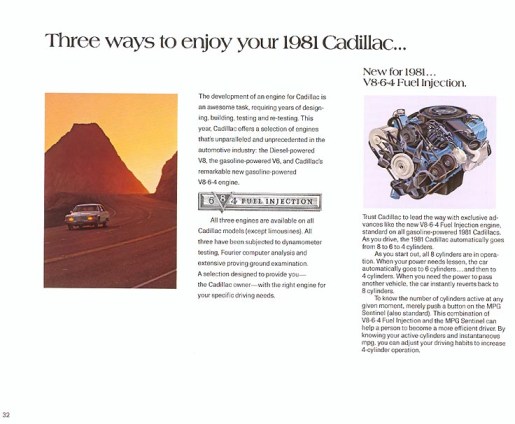
American car companies struggled in the 70’s and 80’s to keep up with fuel efficiency mandates. Unlike in Europe, where smaller cars with smaller engines were all but commonplace, the Big Three found themselves stuck with old engine designs that weren’t made to be efficient–just smooth and powerful. Chrysler, for example, tried to lash a primitive computer system to it’s V8 equipped cars during this time using what they called the Lean Burn System. This forced a two barrel 318 to run lean almost all the time to help with fuel economy. Sadly, that also meant the engine ran very poorly. (Ask how I know, my first classic car was a 1987 Plymouth Gran Fury!) Cadillac also tried to use cylinder deactivation technology many years before that would become common in today’s cars. The poorly timed V8-6-4 engine would be known as a massive flop by GM and would be quickly swept under the rug. Failing the use of computers, large American engines were being forced to make less and less power in the name of the EPA.
The push for cars to be more efficient made the rise of EFI more and more necessary, as it became harder and harder to meet government emissions mandates with technology that was becoming rapidly outclassed. Unlike mechanical fuel injection, EFI was becoming cheap enough to install in a wide range of cars and soon, the carburetor was seen to be on it’s way out. This was especially true in Europe where by 1992, there were no more new cars being sold with them. The last car sold in America to be fitted with a carburetor as standard equipment was the base model Isuzu Pickup in 1994.
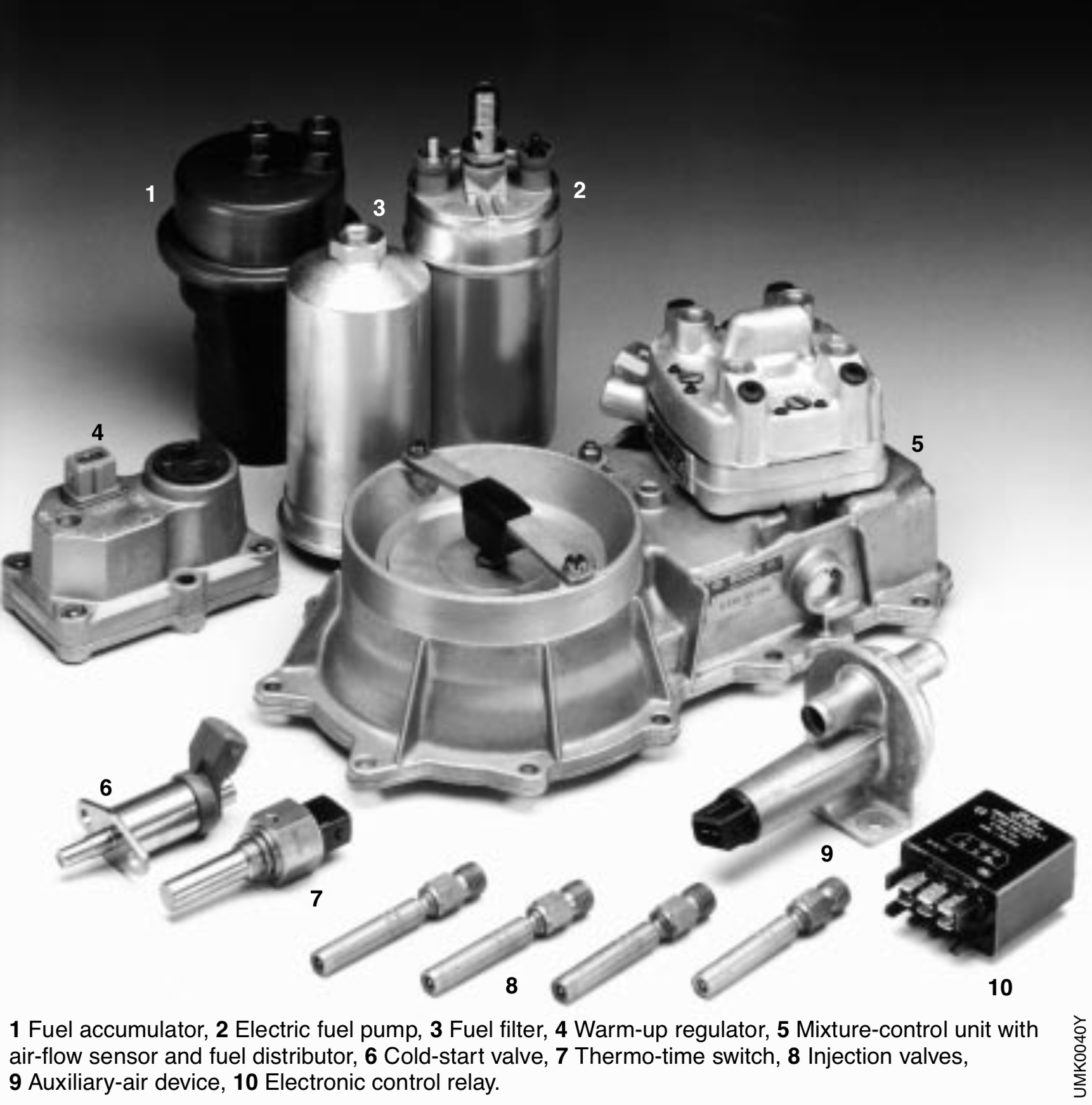
Bosch would continue to refine and update the Jetronic EFI system and in 1973, introduced the K series of injection technology, which was an electronically-aided mechanical fuel injection. Put simply, instead of using electronic signals to fire each injector and draw fuel to each one by one as the cylinder, the fuel pump would feed fuel from a single line into a fuel distributor that would send a continuous flow to all injectors. The engine intake air passes by a valve that controls the level of fuel moving through the system. The injectors were simple check-valves that would open once enough pressure had built up behind the counter spring. This would be used on a wide number of European cars into the 1990’s. Again we look at the 450SL roadster which used this system from 1976 to 1979. The most notable Mercedes to have used the K-Jetronic system was the W116 450SEL 6.9, first introduced in 1975. This was the flagship S class for its day, and its massive engine made 286 horsepower. This was amazing especially for the mid 70’s when power was down across the board for all automakers. The engine, when added to the suburb air suspension offered with this car turned what could’ve been just another massive luxury car into a cruise missile and the fastest sedan of its time.
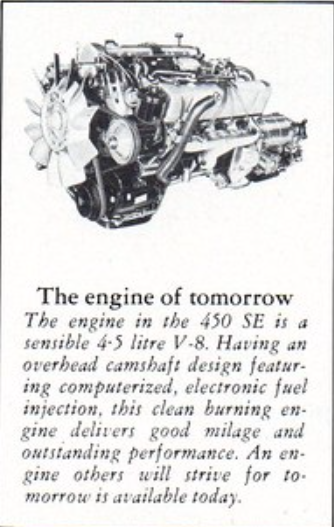
Another advance made during the lifetime of the K-Jetronic system was what would be known as L-Jetronic. The L in this case stands for Luft, or German for Air. This EFI system used a moving vane to determine how much air the engine was taking in, and therefore how much fuel it would need to run smoothly. Making use of custom made integrated circuit boards the Engine Control Unit, or ECU was also much more reliable than what had been found on the D-Jetronic system that had come before it.

Another notable advance in EFI came with the Single Port Injection system, called Mono-Jetronic by Bosch, and was introduced in 1988. This system was called TBI (Throttle Body Injection) by GM, and CFI (Central Fuel Injection) by Ford. I daily drive a 1992 Camaro with TBI, and as you can see by the picture above, there are two little fuel sprayers sitting right above the engine intake. This system isn’t anywhere near as complex as the multipoint fuel injection used on all gas-powered Mercedes of this time, but made for an easy conversion from carburetor to Fuel Injection when the time came to make the switch. While it might not be the most exciting way to make power, this fueling system allows for easy start ups on cold mornings and smooth power delivery all the way up the rev range.
Where We Are And Where We Are Going

It’s funny to think how much technology and history went into something that is now commonplace in every single car sold today. Speaking as someone who has daily driven lots of carbureted cars, I can say that they are not a bad way to get around. However, I sure would’ve liked to have skipped my daily ritual of warming up my 1969 Chevy Caprice in below zero temperatures if I could have. The fact that I can now saunter out to my battered old Camaro, turn the key, and hear that big V8 fire off without any trouble in the coldest, wettest weather is nothing short of a miracle. It would seem that like the carburetor before it, standard EFI might be on it’s way out, however. Mazda has developed what they hope will be the next development in gasoline powered cars. The SKYACTIV-X engine uses incredibly high pressure and a relatively small spark to compress gasoline in much the way a diesel engine does to the fuel it uses. This fuel while under all that pressure needs very little fuel and spark to create combustion and burns that fuel more completely than any other engine before it. How efficiently gasoline powered cars can be made to run will determine their place in history with the rise in popularity of electric vehicles. The next time you climb into your vintage Mercedes fitted with some form of EFI, take a moment to think about all the work that went into getting that car where it is today, and where cars might be headed in the years to come.

